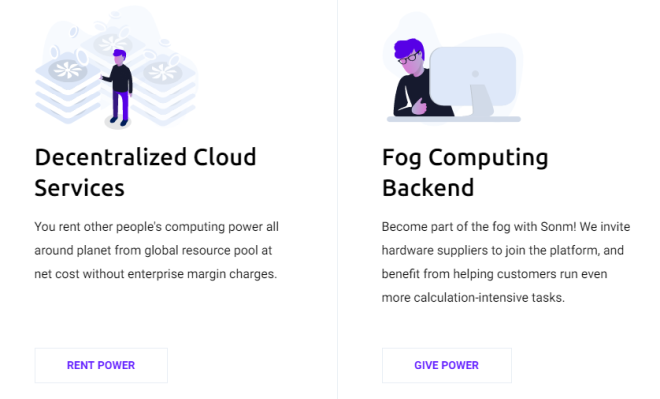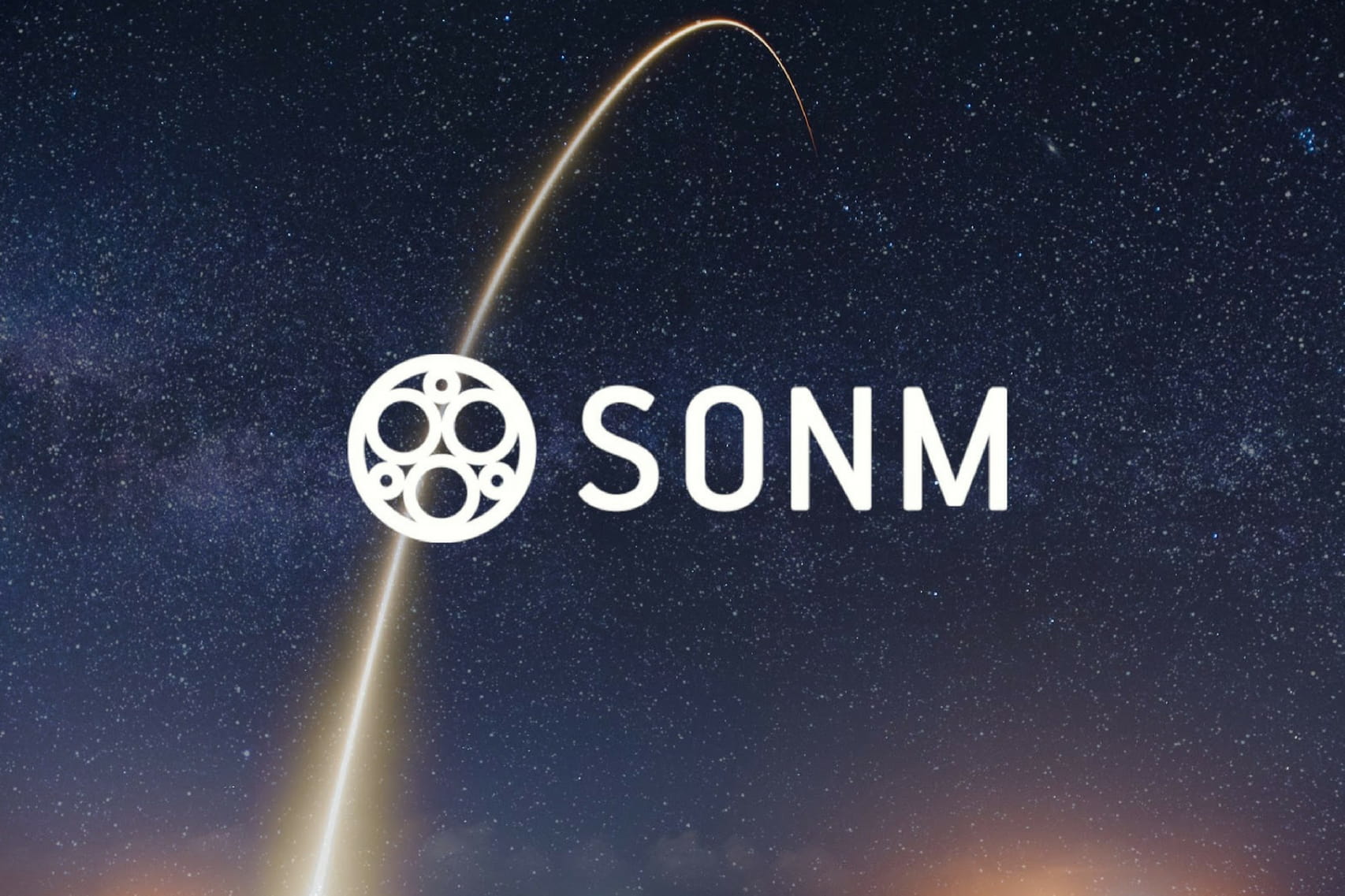After a hype-filled 2 day countdown, the decentralized fog computing platform SONM has finally gone live.
The team has been working on the blockchain project since before the ICO in mid-2017. They’ve quietly hit milestones, announced partnerships with the likes of Hacken and Dbrain, and joined both the Open Fog Consortium and Intel’s Cloud Insider program.
SONM’s testnet launched at the end of May. The commercial livenet launch was promised for the end of June, and SONM delivered right on schedule.
The milestone comes with a full website redesign aimed at helping newcomers to the SONM ecosystem. Marketing efforts will soon get underway to build the platform to the level of a globally accessible supercomputer anyone can put to use.
How SONM Works
SONM is a decentralized marketplace for computing resources. Users join as suppliers to rent out unused GPU, CPU, RAM, or storage space. Customers can then pay a small cryptocurrency fee to use those resources to run custom tasks, everything from mathematical calculations to machine learning.
Suppliers are compensated from customer fees, providing them with an alternative source of income. Customers gain the benefit of lower-cost access to computing power without having to buy their own hardware or rent from expensive cloud service providers.
SONM wants to provide a next-gen fog computing service that can compete with the likes of Amazon’s AWS. Fog computing is similar to cloud computing, only it doesn’t rely on high-powered hardware to deliver centralized resources. Instead, any device can contribute, from PCs to smartphones, and even gaming consoles.
By opening these services to a wide audience, SONM believes it can provide an affordable price structure to user groups of all sizes. Enterprises can utilize SONM to cut costs or supplement their own hardware, and small teams will have access to powerful resources at a fair price.
The livenet launch brings the basic commercial elements of SONM’s infrastructure-as-a-service (IaaS) and platform-as-a-service (PaaS) layers to the public. Users can now sign up as suppliers to rent out their resources, and customers can start exploring what SONM has to offer.
Redesigning for End-Users
In a May 2018 Q&A session, the SONM team mentioned one of the core focus for the livenet launch would be accessibility. To that end, a website redesign was released that shuffled information into simplified categories aimed at specific groups of users.
Suppliers
Suppliers on SONM are people and companies that offer computing resources for rent on the network. This includes GPU, CPU, RAM, and even storage space.
SONM identifies 3 potential groups of suppliers. Two of the common ones include ordinary PC users who can turn their device into a SONM node and run it for extra income, and server admins who can rent excess capacity to ensure maximum profits from their setup.
The third group is a potentially large one: cryptocurrency miners. Anyone running multi-use rigs has to choose the most profitable currency to mine at any given time, then monitor their selection and switch currencies to stay in the black. It’s a guessing game with high stakes, but SONM believes it has a better alternative.
Cryptocurrency miners can turn their equipment into SONM nodes instead of mining. SONM automatically delivers the most profitable work from the cloud to the mining market to keep profits as high as possible. And because suppliers always have profitable tasks to complete, joining SONM could be more lucrative than mining.

Customers
Customers in the SONM ecosystem are users, businesses, and organizations who rent resources from network suppliers.
The key benefits for consumers are lower costs. It’s expensive to purchase and maintain hardware, and renting from cloud service providers such as AWS isn’t much cheaper, especially for small groups or individuals.
With a scalable system such as SONM’s, customers can rent only the resources they need to run tasks or applications.
Investors
SONM’s core focus will always be on creating a usable product for the world. But any successful project needs investors to keep the lights on while the team does their job.
The SONM network is powered by SNM, a publicly traded ERC-20 token. Investors can purchase and trade SNM as with any other cryptocurrency, or they can eventually establish a PoS masternode to join the network as a transactions validator. As with any staking coin, the more SNM a masternode user holds, the higher their rewards.
An advantage SNM has over many other cryptocurrencies is it’s backed by a real product. The more people who adopt SONM as suppliers or customers, the more value the token will gain.
SNM is currently available in ETH and BTC pairs on a number of exchanges, including Binance, KuCoin, IDEX, and Liqui. SONM also announced the crypto-to-crypto service ChangeNOW is supporting SNM swaps for fast access to SNM.
Solutions
A functioning livenet means real-world tasks can be carried out on SONM’s network. The team drew a few raised eyebrows when it demonstrated a Quake server running on SONM, but the platform can be used for more practical purposes, as well.
SONM currently outlines 4 main use-case solutions:
- Infrastructure for blockchain applications
- Machine learning
- Rendering
- Content delivery networks (CDN)
Blockchain projects can benefit from SONM’s large pool of GPUs that are cheaper to access that cloud provider solutions. Scalability is available on-demand, and payments are conveniently handled in cryptocurrency. SONM is already providing clients such as Dbrain, AION, and Faceter with resources through its fog computing network.
Machine learning is on-par with blockchain as one of the rising tech stars of the 21st century. More applications are being found for machine learning apps every day, but the cost of running and training these algorithms is far from insignificant. SONM can help curb these investments with its fast and efficient network built to work seamlessly with popular machine learning algorithms.
CGI rendering is another resource-intensive task. By providing competitive pricing for its services, SONM can help everyone from individual artists to animation studios cut costs and be more productive.
Finally, SONM sees potential in customers using the network as a CDN. Suppliers can deliver the storage and CPU power necessary for backing a content delivery network ecosystem, all the user has to do is rent the appropriate resources and scale as necessary.
Room to Grow
Although SONM’s commercial livenet is active for both consumers and suppliers, the network is not yet feature complete.
One of the more noticeable absences is the inability to run SONM on multiple platforms. Both a command line and a graphical interface are available, but they’re only compatible with Debian Linux (which includes Ubuntu).
Installation currently takes place via the terminal and is outlined in detail on SONM’s Getting Started documents. Until the network can be accessed from one-tap apps on more devices, casual users are unlikely to get involved.
Masternodes have been announced but are not yet available. The team expects to release this feature in August/September.
For more information about SONM’s near-future plans, see our coverage of the team’s 2018 roadmap.
Final Thoughts
SONM continues to look like a strong project with lots of potential. Users are finding the system easy to understand, even in its early state. The team is also gearing up for a massive marketing effort, which could bring in a huge influx of interested parties and partnerships.
The on-schedule livenet launch was a smooth success. SONM is definitely on a roll.
To learn more about the SONM ecosystem or to start contributing to the network, see the team’s Getting Started page. You can also follow them on Telegram or Twitter for the latest updates.
Related: Could Quantum Computing Kill Blockchain?

